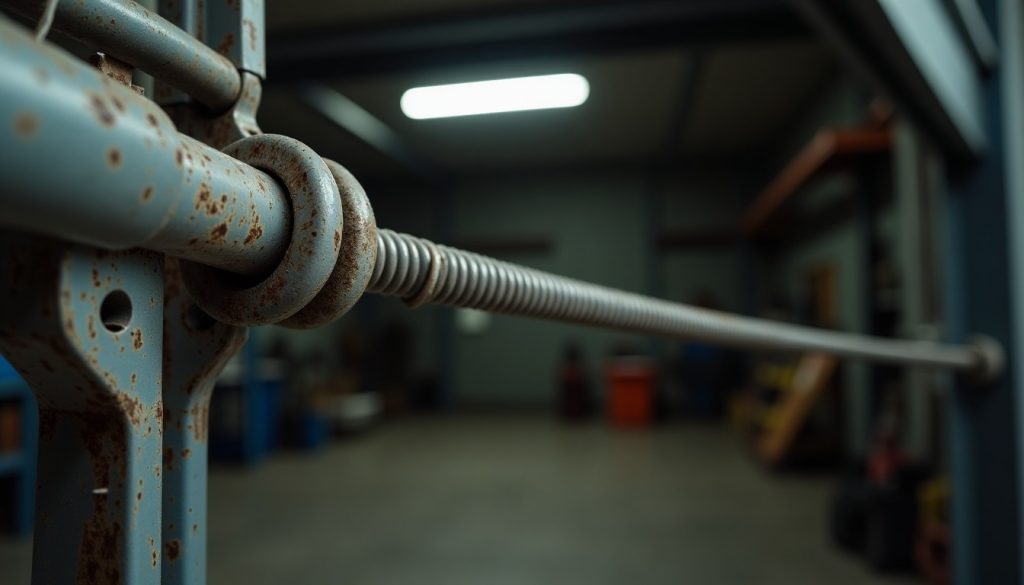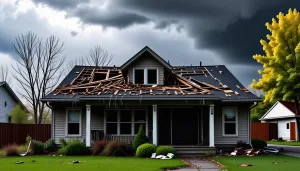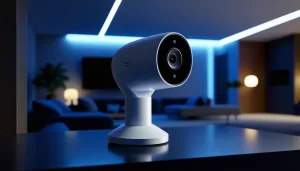Garage doors are essential components of our homes that provide security and convenience. However, just like any mechanical system, they are subject to wear and tear over time. Identifying common garage door problems is crucial for homeowners to address issues promptly and avoid costly repairs. Understanding the symptoms of these problems can also assist in obtaining accurate repair pricing and forming better maintenance routines.
One of the most frequently encountered issues with garage doors is a malfunctioning opener. A garage door opener that does not respond or responds irregularly can be inconvenient and may indicate problems such as dead batteries in the remote, misaligned photo eyes, or issues within the opener’s motor itself. Troubleshooting should begin with checking the simplest components, such as ensuring the remote has fresh batteries and the opener is correctly plugged in.
Another common issue is an unbalanced door. An indication of this problem is a garage door that appears crooked or makes hard opening and closing motions. This imbalance can often result from worn torsion or extension springs, which are essential for counterbalancing the weight of the door. Operating a door with broken or weakened springs can be dangerous, as it could suddenly fall, causing injury or further damage.
Garage door tracks and rollers can also encounter problems over time. Dirt, debris, and general wear can lead to misalignment, creating friction and noise during operation. Homeowners might notice grinding noises or uneven movement, signaling that the tracks may need realignment or the rollers require lubrication or replacement. Keeping the tracks clear and ensuring the door moves smoothly on its rollers can help mitigate these issues.
- Spring Issues: These are among the most hazardous problems. Springs maintain tension in the garage door system, and when they break, they can cause the door to stop opening or close spontaneously. Regular inspection by professionals is recommended, as DIY repairs are risky.
- Cable Malfunctions: Garage door cables can fray or snap under excessive pressure. When cables weaken, this can lead to uneven lifting or the door getting stuck halfway.
- Sensor Problems: The sensors prevent the door from closing when there is an obstruction. Misaligned sensors can cause the door to reverse function unexpectedly, causing inconvenience.
- Weather Stripping Wear: Damaged weather stripping can lead to air leaks and pest infestations. Regular inspection and replacement ensure energy efficiency and the security of the garage.
For those looking to understand repair pricing better or plan preventive maintenance, awareness of these typical garage door problems is beneficial. Proper identification can lead to quicker and possibly less expensive solutions, as homeowners can communicate specific issues to repair professionals or choose appropriate maintenance actions themselves.
| Problem Type | Symptoms | Potential Causes |
| Opener Malfunction | No Response, Irregular Operation | Dead Batteries, Motor Issues |
| Unbalanced Door | Crooked Door, Hard Motion | Worn Springs |
| Track and Roller Problems | Grinding Noises, Uneven Movement | Misalignment, Debris |
Recognizing these common garage door issues and their symptoms plays a key role in maintaining the functionality and safety of your garage. By understanding the nature of these problems, homeowners can make informed decisions about necessary repairs and maintenance, and communicate effectively with service providers to prevent small issues from turning into larger, more expensive problems.
factors affecting repair costs
The cost of repairing garage doors can vary significantly depending on several crucial factors. Understanding these factors can help you estimate potential costs and budget effectively for repairs. Below are the key elements influencing repair pricing:
- Type and Extent of Damage:
The more extensive the damage, the higher the repair costs will likely be. A simple issue like replacing worn weather stripping costs far less than repairing a garage door with extensive structural damage or malfunctioning hardware. Identifying the nature and severity of the issue early on can prevent minor problems from escalating, thus controlling costs.
- Garage Door Material:
The material of the garage door itself can impact the cost of repairs. For example, a wooden door may require specialized repairs for cracks and rot, whereas steel doors might require only a simple patch for dents. Materials like wood often need specific equipment and expertise, leading to increased labor costs, whereas vinyl or aluminum doors might be easier and cheaper to repair.
- Age and Model of the Garage Door:
Older garage doors or those from discontinued lines may have parts that are difficult to find, which can increase repair costs as special ordering might be necessary. Newer doors, conversely, often have parts readily available, potentially reducing both time and cost for repairs. Additionally, modern doors may have advanced technology that requires specialized knowledge to service.
- Labor Costs:
Labor costs can vary based on the expertise required and the region you live in. Urban areas or places with a high cost of living typically have higher labor pricing than smaller towns or rural locations. Furthermore, specialized repair work, such as fixing complex automated systems, can require more skilled labor, which can also drive up costs.
- Warranty Coverage:
If your garage door is still under warranty, your repair costs may be significantly reduced or even eliminated. Warranties can cover both parts and labor for a defined period, provided the damage is within the warranty terms. Always check your warranty coverage before proceeding with repairs, as it may lead to substantial savings.
Being aware of these factors aids homeowners in navigating repair pricing more effectively. By considering these aspects, you can better anticipate costs and prepare accordingly, ensuring timely and cost-efficient resolutions to any garage door issues that may arise.
average repair cost breakdown
When examining the costs associated with garage door repairs, it’s essential to have a clear understanding of how these expenses are broken down. Knowing the average repair cost breakdown can help homeowners make informed decisions about addressing their garage door issues and budgeting accordingly. Let’s delve into the expected expenses for some of the most common garage door repairs and what drives these costs.
One of the primary components that affect the repair pricing of garage doors is the garage door opener, which is a vital element in the system’s operation. On average, repairing a malfunctioning opener ranges from $100 to $250, depending on the nature of the issue. This cost can cover simple fixes like recalibrating the sensors or more involved tasks such as motor repair, depending on the opener’s complexity and the availability of replacement parts.
Next, consider the springs — integral parts that counterbalance the weight of the door. Repairing or replacing torsion or extension springs typically costs between $150 and $350. Given that springs are both crucial for function and potentially hazardous if mishandled, it’s generally recommended to hire professionals for these repairs, which can factor into the pricing.
Track repairs are also common, especially if the garage door is producing grinding noises or moving unevenly. Fixing track alignment can cost around $125 to $150, which varies based on the severity of misalignment and whether replacement sections are needed. Keeping these tracks in good condition is essential for smooth garage door operation and avoiding further costly breakdowns.
The cables, which support the door by taking on tensions provided by the springs, can wear out over time. Repairing or replacing garage door cables may cost $100 to $200. Given that cable issues can lead to the door sticking or becoming unworkable, attending to these problems promptly can prevent expensive damage to other door components.
Finally, general maintenance and minor repairs, such as fixing dents or applying lubricant to rollers, can incur minimal costs, often ranging from $50 to $100. Such small fixes are an excellent way for homeowners to ensure the longevity and functionality of their garage doors without breaking the bank. Regular maintenance can significantly prolong the lifespan of various components, ultimately leading to reduced repair costs over time.
By understanding these typical repair costs, homeowners are better equipped to anticipate and manage their repair pricing. This knowledge allows for more accurate budgeting and planning, ensuring that garage doors remain safe, functional, and reliable throughout their lifespan. With an awareness of the average cost breakdown, homeowners can also be more vigilant in preventive maintenance, thereby mitigating the likelihood of facing higher repair bills due to neglect or delayed repairs.
DIY vs professional repair
When faced with the decision of tackling garage door repairs themselves or hiring a professional, homeowners often weigh the costs, convenience, and safety aspects associated with each option. It’s essential to carefully consider the capabilities and risks involved in both DIY and professional repairs before making a decision.
For those inclined towards DIY repairs, a few common garage door issues can be relatively straightforward to fix, provided you have the necessary tools and a basic understanding of the system. Simple tasks such as replacing weather stripping or lubricating noisy rollers can be cost-effective and safe DIY projects. These repairs generally involve readily available materials and straightforward processes, offering savings on labor costs. However, it’s crucial to ensure that you have a clear understanding of the repair process to avoid potential hazards or accidental damage to the system.
Nevertheless, more complex issues—such as troubleshooting a malfunctioning opener, realigning tracks, or repairing broken springs—typically require specialized knowledge and tools. Attempting these repairs without the requisite skills can not only prove challenging but can also result in further damage or personal injury, particularly in cases involving the tension-loaded springs. Garage door springs are under considerable pressure and pose significant safety risks, making them unsuitable for DIY repairs. It’s advisable to engage a professional for such tasks to ensure that the repair work is done safely and correctly.
Professional garage door repair services, while more expensive upfront due to labor costs, usually offer lasting peace of mind. Professional repair technicians bring expertise, experience, and necessary tools to ensure that all components are correctly assessed and repaired, minimizing the likelihood of recurrent issues. Hiring professionals also provides the advantage of warranty coverage on repairs, offering further reassurance and saving potential future repair costs should problems arise from the repair work itself.
Economically, the decision between DIY and professional repairs involves considering not just the immediate repair pricing. It’s also about the potential long-term costs associated with improper repair attempts and the value of your time and safety. Engaging a credentialed professional can often prove to be an investment in the longevity and reliability of your garage door system, avoiding the costlier repercussions of DIY mistakes.
Remember that regular maintenance can go a long way in preventing common issues, whether you choose to perform such upkeep yourself or incorporate professional services. By considering your level of expertise, the complexity of the repair, and the value of a job well done, you can make a more informed decision when choosing between DIY efforts and hiring a professional for your garage door needs.
tips for preventing future issues
To ensure that your garage doors remain in optimal condition and to keep repair pricing at a minimum, adopting certain preventive measures is crucial. Regular maintenance is key to preventing the common issues identified in many garage door systems and extends the longevity of the components.
Start by conducting periodic visual inspections of your garage door and its components. Look for signs of wear and tear, such as frayed cables, rust on metal components, and worn weather stripping. Identifying and addressing these issues early can prevent them from worsening and turning into costlier repairs down the line.
Lubrication is another vital preventive measure to maintain smooth and quiet operation. Apply a silicone-based lubricant to moving parts, including the rollers, hinges, and tracks, every six months. This practice reduces friction and stress on the components, consequently decreasing the chances of wear and misalignment.
Additionally, keep the garage door tracks clean and free from dirt and debris. Use a mild cleaner to wipe down the inside of the tracks occasionally, ensuring the rollers can glide smoothly without obstruction. Regular cleaning will help prevent grinding noises and uneven movements that might occur if the tracks become clogged.
Monitor the balance of your garage door by periodically disconnecting the opener and manually lifting the door halfway. The door should stay in place if it is balanced correctly. If it does not, this could indicate an issue with the springs or other balancing components, which should be addressed by a professional to maintain safety and avoid potential damage.
Lastly, ensure that the photo-eye sensors are aligned correctly and free from dirt or obstructions. Misaligned or dirty sensors can cause the door to behave erratically, leading to inconveniences or potential safety hazards. Regularly clean the lenses and check alignment to ensure the sensors function properly.
Implementing these preventive tips will aid in minimizing the need for expensive repairs, ensure safety, and contribute to the efficient operation of your garage door system.
In conclusion, navigating garage door repairs with an understanding of common problems, repair pricing factors, and maintenance strategies empowers homeowners to make informed decisions that safeguard both functionality and cost-efficiency. By carefully weighing DIY and professional repair options and consistently applying preventive maintenance tips, you can extend the life of your garage door, reduce unexpected repair expenses, and enjoy peace of mind knowing your home’s security and convenience are consistently maintained.





